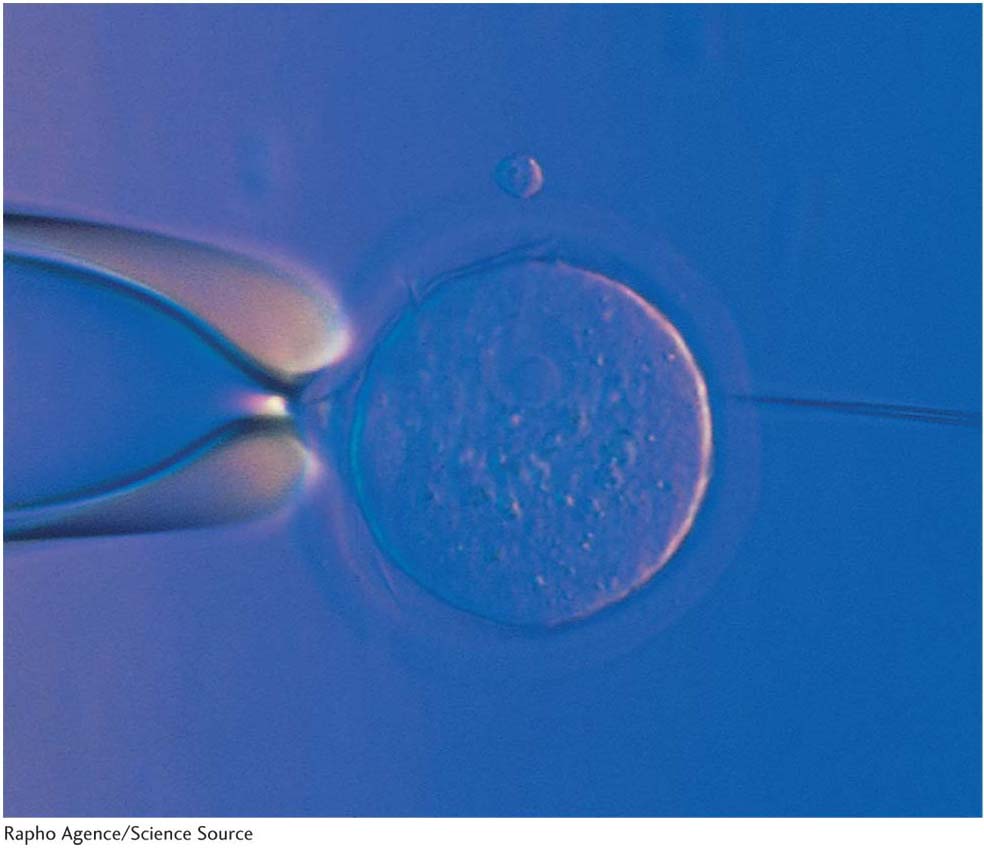Chapter Introduction
Gene Isolation
and Manipulation
CHAPTER
10
LEARNING OUTCOMES
After completing this chapter, you wiil be able to
Diagram the steps by which a gene is isolated and amplified by cloning.
Describe how different types of libraries are used to identify specific DNA molecules.
Compare the techniques used to amplify DNA with and without cloning.
Apply the various procedures used to analyze isolated DNA, RNA, and protein.
Contrast the different experimental approaches used to modify the genomes of plants and animals in the laboratory.
Describe the implications of molecular techniques for understanding gene function.

OUTLINE
|
10.1 |
|
|
10.2 |
|
|
10.3 |
|
|
10.4 |
|
|
10.5 |
|
|
10.6 |
Genes are the central focus of genetics, and so, clearly, it would be desirable to isolate a gene of interest (or any DNA region) from the genome in an amount suitable to study. Isolating individual genes and producing enough of them to analyze can be a daunting task because a single gene is a tiny fraction of an entire genome. For example, the haploid human genome contains over 3 billion base pairs, whereas the coding region of an average gene contains only a few thousand base pairs. How do scientists find the proverbial needle in the haystack, the gene, and then produce quantities of it for analysis?
Many investigations in genetics begin with the desire to study a trait or a disease. Using forward genetics, as described in Chapter 2, we search for mutants that exhibit an altered phenotype, and then perform crosses or analyze pedigrees to determine whether that phenotype is determined by a single gene. In Chapter 4, we discussed how mapping by recombination helps locate the gene at the DNA level. In this chapter, we continue by presenting molecular methods for identifying a gene of interest and studying its molecular function.
The first step in studying gene function is to isolate its DNA and reproduce it in quantities suitable for study.
Just like a construction worker, a genetic engineer needs tools. Most toolboxes that we are familiar with are filled with tools like hammers, screwdrivers, and wrenches that are designed by people and manufactured in factories. In contrast, the tools of the genetic engineer are molecules isolated from cells. Most of these tools were the product of scientific discovery—
One way to separate our gene of interest from the rest of the genome is to cut the genome with “molecular scissors” and isolate the small fragment containing the gene. Werner Arber discovered these molecular scissors, and for this discovery he was awarded the Nobel Prize in Physiology or Medicine in 1978. However, Arber was not looking for a tool to cut DNA precisely. Rather, he was trying to understand why some bacteria are resistant to infection by bacterial viruses. By answering this biological question, he discovered that resistant bacteria possess a previously unknown enzyme—
As another example, it is unlikely that anyone would have predicted that DNA polymerase, the enzyme discovered by Arthur Kornberg, a discovery for which he received the Nobel Prize in Physiology or Medicine in 1959, could be fashioned into two powerful tools for DNA isolation and analysis (see Chapter 7). To this day, many of the techniques used to determine the nucleotide sequence of DNA rely on synthesizing it with DNA polymerase. Similarly, most of the protocols used to isolate and amplify specific regions of DNA from sources as disparate as a crime scene to a fossil embedded in amber rely on the activity of DNA polymerase.
DNA technology is a term that describes the collective techniques for obtaining, amplifying, and manipulating specific DNA fragments. Since the mid-